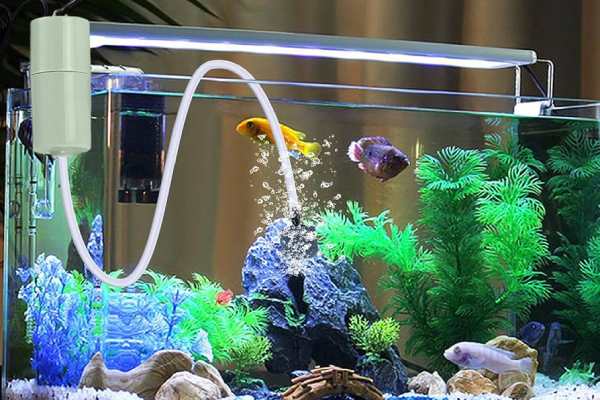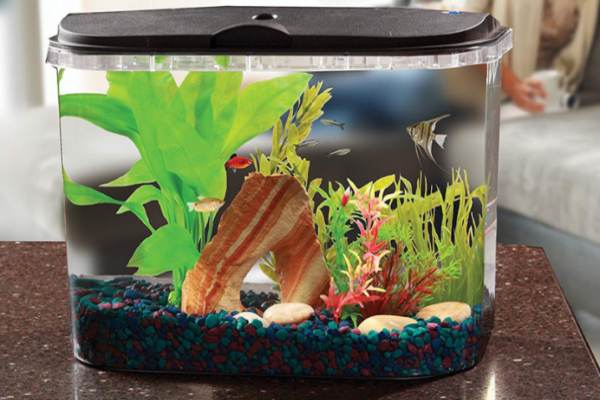Never Put Chlorine In Water Features? Other Alternatives
Are you already scared of seeing a buildup of algae in your water feature? Well, you are not alone. A lot of water feature owners experience that too.
The truth is, algae growth is a completely normal part of any water feature ecosystem. A modest amount of algae in your water feature is fine. It is, in fact, an indication of a healthy ecology.
However, excessive growth of algae in your water feature can be difficult to manage and also make your water feature unappealing.

You know, water features are meant to add both relaxation and aesthetic appeal to your outdoor space.
Because of this, maintaining the clarity and sanitation of the water is critical to ensuring that these features remain appealing.
While chlorine has long been employed as a water treatment agent used to suppress algae growth, its potential downsides have led a lot of enthusiasts to search for alternatives.
In this blog post, we will enlighten you on the downside of using chlorine in your water features. We will also reveal to you very effective alternatives, including DIY alternatives, but before that, let’s quickly look at what algaecides are.
What are algaecides?
Algae are microscopic plants that flourish in damp conditions, especially water features. Algae that reproduce excessively can make water cloudy, release unpleasant odour, and even clog filters.
This does not only make your water feature unappealing but can also be detrimental to the aquatic organisms in it.
Because of its numerous side effects, most water feature owners use algaecides to stop its growth.
Obviously, you are wondering what algaecides are. Algaecides are compounds that have been developed to stop the excessive growth of algae by suppressing or killing them.
Types of Algaecides
Now you have a clear understanding of what algaecides are and how effective they are in controlling the growth of algae in your water feature, how do you know which ones are the most effective? Keep scrolling to find out.
There are numerous types of algaecides, but they are divided into two main categories which are natural and synthetic algaecides. In this section, we will discuss in detail the two types of algaecides with examples.
Natural Algaecides
Natural algaecides are very effective at killing algae. Examples of natural algaecides are;
Copper Sulphate
Copper sulphate is a mineral that is used as a natural algaecide. It significantly inhibits algae development by interfering with their biological activities.
Barley straw
This produces chemicals that inhibit algae growth. If you are looking for a more environmentally friendly approach, go for barley straw. Although it may take longer to see results, they are very effective.
Beneficial Bacteria
You see, if you starve algae, they won’t be able to thrive, and specific bacteria strains can aid. They will devour the nutrients that algae rely on, reducing their growth and keeping your water feature clean.
Synthetic Algaecides
Synthetic algaecides are more numerous, less expensive, and more effective than natural algaecides. They are most preferred by water feature owners due to their various advantages. Here are some examples of synthetic algaecides;
Quaternary Ammonium Compounds (Quats)
These synthetic algaecides destroy algae by disrupting their cell membranes. Benzalkonium chloride is one example you can utilize.
Polyquat Algaecides
These algaecides act by interfering with algae growth mechanisms. When compared to chlorine, they are often more stable and effective over a larger pH range.
Algaecide-Polymer Combinations
These products mix algaecides with polymers, which aid in Killing algae and provide longer-lasting protection.
Polymer Pool Algaecides
Polymer-based algaecides are made of specific polymers that help algaecides attach to pool surfaces and gently release them over time.
This controlled release mechanism protects against algae development. They are effective even at low concentrations, making them an economical option for your water feature.
Metallic Algaecides
Metallic algaecides, such as those containing copper or silver compounds, are helpful at preventing and treating algae infestations in your water feature.
They work by releasing ions that disturb the functions of algae cells. You know, copper based algaecides are popular among water feature owners because of their dependability and broad-spectrum efficacy.
Best Algaecides
As earlier said, there are lots of algaecides sold in stores and markets, but in this section, we will focus on the best, which is HTH 67032 Super Algae Guard Swimming Pool Algaecide Cleanser.
The truth is, algae growth can quickly turn your pool into a green, muddy mess, making it unpleasant to swimmers, but this algaecide can perform wonders for your swimming pool. It is a specialist treatment that can combat algae growth in your swimming pool, regardless of the amount.
Not just that, this algaecide cleanser also provides a focused solution to this issue, assisting you in maintaining a clean and comfortable swimming environment.
Key features of HTH 67032 Super Algae Guard
Algae Control
This algaecide’s principal function is to control and prevent the growth of numerous types of algae in your swimming pools.
It works by interfering with the cellular activities of algae, causing them to die and be removed from your pool.
Broad-Spectrum Effectiveness
The HTH 67032 Super Algae Guard is designed to combat all varieties of algae, including green, yellow, and black algae, providing full protection against various types of infestations in your pool.
Fast-acting
Algae growth can be explosive, especially in warm, humid environments. This algaecide is noted for its quick action, which means it begins working immediately after application.
This immediate response aids in preventing algae from taking over your pool.
Now that you have known what algaecides are and the different types of algaecides, how do you use them for outstanding results? Keep reading to find out in the next section.
How to use Algaecides
You know, excessive algaecide can be detrimental to your water features, especially if there are some aquatic organisms in them. So, it’s important to use it appropriately. Now, here’s how to utilize them effectively:
Choose the Right Algaecide
Algaecides come in a variety of forms, including copper-based, quaternary ammonium compounds, and polyquat-based.
Choose the best one for the sort of algae you’re dealing with and the water body you’re treating.
Dosage
Carefully read and follow the manufacturer’s instructions and guidelines found on the label of the algaecide.
This will provide you with information on the recommended dosage, frequency of application, and safety precautions.
However, dosage is usually calculated per gallon of water, and you will get the right ratio based on the manufacturer’s guidelines.
Test the water
It is important to check the pH and chlorine levels of the water in your pond or pool before adding any algaecide, be it synthetic or natural.
You may wonder why. Now here’s it; the effectiveness of the algaecide might be affected by the pH of the water. Testing the water first will allow you to make the necessary adjustments.
Add algae to your water feature
Now that you have tested the water, the next step is to add the Algaecide.
Here’s a simple guideline; if the algae development in your water feature is minimal, you should wait at least 30 minutes before dipping your hands in.
If the algae growth in your water feature is severe, you will have to extend the time to at least 24 hours as algaecides can cause skin irritation.
Scrub the water feature
It is important to scrub your water feature with a hard brush to effectively remove any remaining debris. It’s advisable to do this within 24 hours.
If any visible algae remains, try repeating the treatment. This practise keeps your water pure and prevents murkiness after applying algaecide.
Prevention and Maintenance
Regular maintenance is required to keep algae at bay. Ensure proper filtration, circulation, and balanced water chemistry.
Brush your water feature’s surface on a regular basis to remove any dead algae or debris.
Safety Precautions
When handling algaecides, always wear suitable protective gear, such as gloves and goggles. Avoid bringing it into close contact with your skin, as it may irritate it.
How to dechlorinate water
Chlorine is often used to disinfect water, but in some cases, it may be necessary to remove or neutralize chlorine before using the water.
Obviously, the next question on your lips is, “How do I neutralize or remove chlorine from water?” Well, you don’t have to worry about that because we will discuss it in this section.
Now, here are some ways to dechlorinate water before using it.
Water filter system
There are numerous water filters you can install in your water feature, and they remove chlorine and other pollutants from your water feature effectively. One example is activated Carbon Filters. However, water filters can be very expensive to purchase but are also very effective in dechlorinating water.
Dechlorination Tablets
Dechlorination tablets are intended specifically to neutralize chlorine in water features and other bodies of water.
Just like the water filter system, there are numerous types of dechlorination tablets available in stores and markets.
You can get one of them and use it in your water feature. It is one of the most environmentally friendly techniques for removing chlorine.
Another easy method of removing chlorine from water features is to let the water be exposed to the air for roughly 24 hours. Over time, chlorine will naturally dissipate. This strategy is appropriate for non-urgent demands, such as watering plants.
DIY Alternatives
There are other DIY techniques that you can use to remove algae from your water features. However, these methods may not be suitable for large water features like pools. You can only use it for small water features. They include;
Vinegar
Are you struggling with nasty algae growth in your water feature but do not want to use the alternatives listed above, probably because they are expensive? If yes, then you should go for vinegar.
Vinegar is a very effective and less expensive option. All you have to do is empty your fountain, pour in your vinegar, and use a hard brush to scrape away the algae.
After scraping the algae, spray your fountain with the remaining vinegar and let it dry; this will ensure that any lingering algae is gone. Once everything is dry, rinse it with a lot of water to remove all other debris.
Baking powder
Another DIY method you can utilize to remove algae from your water feature is to sprinkle baking soda on the surface of the water feature.
It’s important to note that this method may not kill the algae like vinegar, but it will gently nudge them away, leaving you with a neat and clean water feature.
Conclusion
Effective algae treatment is required to keep water features clean and beautiful. While chlorine has long been used for this purpose, other algaecides provide safer and more environmentally friendly alternatives.
Natural alternatives to chlorine include copper sulphate and barley straw, as well as manufactured remedies such as quats and polymer-based algaecides.
By selecting the proper algaecide based on the unique needs of your water feature, you can ensure a sparkling, pleasant aquatic environment without using chlorine.
Read Also: 8 Best Paints For Water Features [Quick Review]
FAQs
It is not recommended to use chlorine in water features since it can harm the ecosystem.
Yes, there are less hazardous alternatives to chlorine, and they include vinegar or baking soda.
Chlorine can disrupt the balance of the aquatic environment and kill aquatic plants and animals.


![Why Your Fountain Loses Water [Quick Solution]](https://aquifacts.com/wp-content/uploads/2024/06/why-your-fountain-loses-water-IMG_1.jpg)

![8 Best Paints For Water Features [Quick Review]](https://aquifacts.com/wp-content/uploads/2024/04/best-paints-for-water-features_img.jpg)

